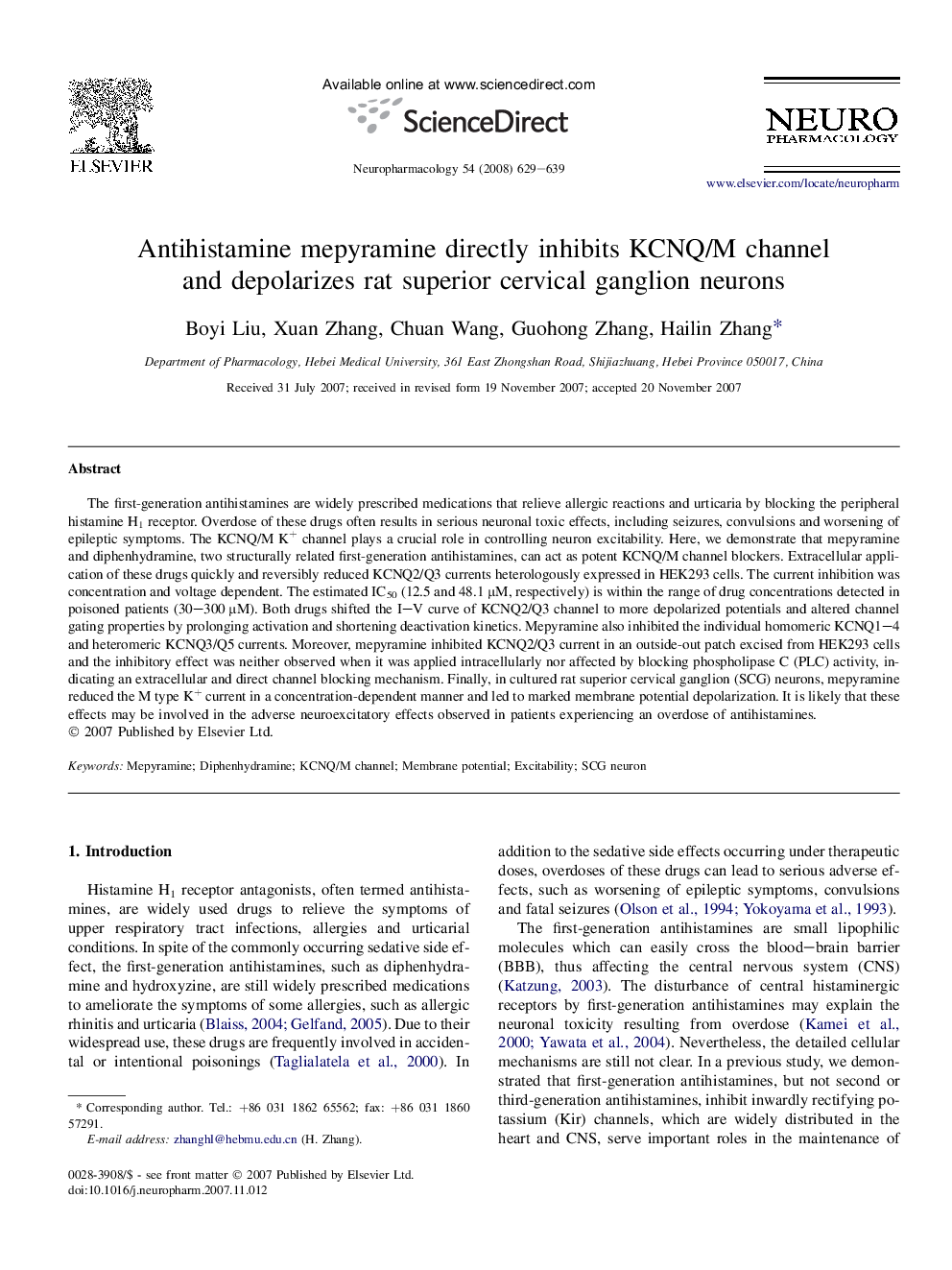| کد مقاله | کد نشریه | سال انتشار | مقاله انگلیسی | نسخه تمام متن |
|---|---|---|---|---|
| 2494431 | 1115565 | 2008 | 11 صفحه PDF | دانلود رایگان |

The first-generation antihistamines are widely prescribed medications that relieve allergic reactions and urticaria by blocking the peripheral histamine H1 receptor. Overdose of these drugs often results in serious neuronal toxic effects, including seizures, convulsions and worsening of epileptic symptoms. The KCNQ/M K+ channel plays a crucial role in controlling neuron excitability. Here, we demonstrate that mepyramine and diphenhydramine, two structurally related first-generation antihistamines, can act as potent KCNQ/M channel blockers. Extracellular application of these drugs quickly and reversibly reduced KCNQ2/Q3 currents heterologously expressed in HEK293 cells. The current inhibition was concentration and voltage dependent. The estimated IC50 (12.5 and 48.1 μM, respectively) is within the range of drug concentrations detected in poisoned patients (30–300 μM). Both drugs shifted the I–V curve of KCNQ2/Q3 channel to more depolarized potentials and altered channel gating properties by prolonging activation and shortening deactivation kinetics. Mepyramine also inhibited the individual homomeric KCNQ1–4 and heteromeric KCNQ3/Q5 currents. Moreover, mepyramine inhibited KCNQ2/Q3 current in an outside-out patch excised from HEK293 cells and the inhibitory effect was neither observed when it was applied intracellularly nor affected by blocking phospholipase C (PLC) activity, indicating an extracellular and direct channel blocking mechanism. Finally, in cultured rat superior cervical ganglion (SCG) neurons, mepyramine reduced the M type K+ current in a concentration-dependent manner and led to marked membrane potential depolarization. It is likely that these effects may be involved in the adverse neuroexcitatory effects observed in patients experiencing an overdose of antihistamines.
Journal: Neuropharmacology - Volume 54, Issue 4, March 2008, Pages 629–639